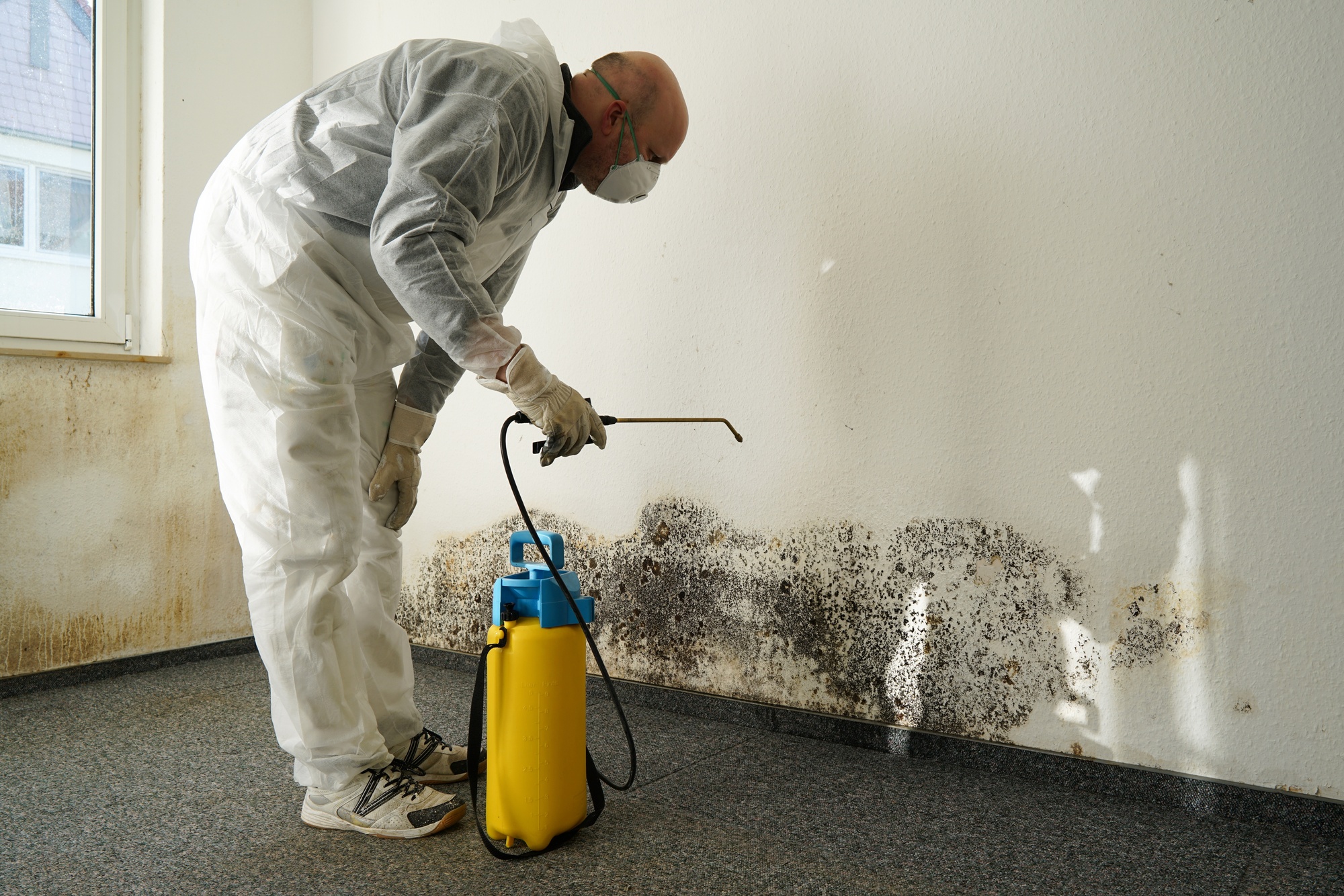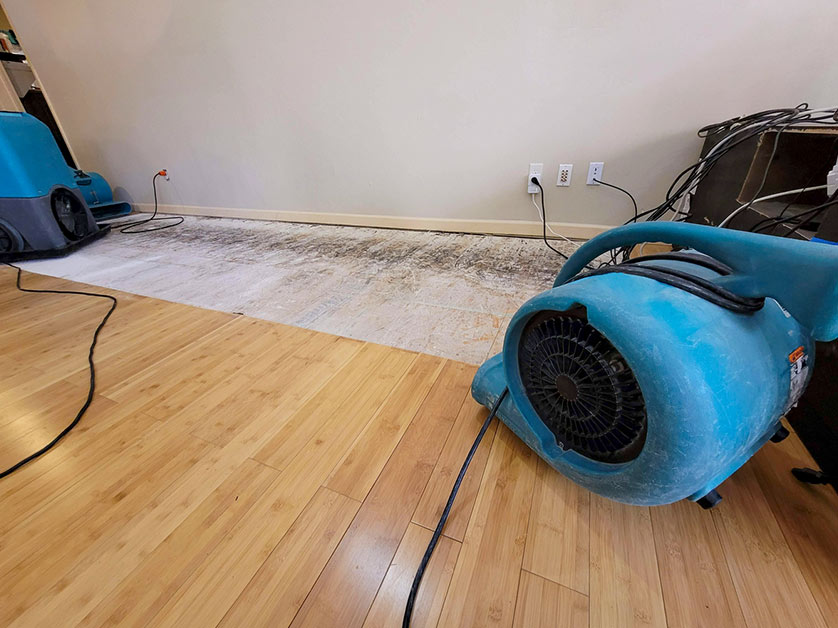Must-know Flood Cleanup Services FAQs for homeowners
Top Tips for Effective Water Damage Restoration: Protect Your Residential Property Today
Water damage can strike unexpectedly, triggering considerable disruption and possible risks. Efficient restoration requires a systematic method to lessen additional injury. From assessing the damage to implementing precautionary procedures, each step plays an essential role in safeguarding building. Recognizing these techniques can make all the difference in the aftermath of a water-related dilemma. What necessary activities should be prioritized to ensure complete defense?
Assess the Damage Immediately

Shut Off the Water
Turning off the water system is an essential action in protecting against additional damage during a water-related occurrence. When a leak or flood happens, immediate action is vital to decrease the level of the damage. Situating the major water shut-off shutoff must be a priority. This valve is typically situated near the water meter or where the water line gets in the property. As soon as situated, transforming the valve clockwise will stop the flow of water. In situations where the main valve is inaccessible, individual shut-off valves for home appliances may likewise be utilized. Promptly turning off the water system not just safeguards the property from additional injury however additionally promotes the succeeding restoration procedure, making certain that recuperation efforts can start without delay.
Eliminate Excess Water Immediately
Removing excess water immediately is vital for reducing damage and stopping mold development in impacted locations. The longer water continues to be touching products such as wood, insulation, and drywall, the greater the threat of structural damage and the development of mold and mildew. Property owners should act promptly to examine the situation and utilize suitable tools, such as damp vacuum cleaners or pumps, to remove standing water successfully. If the quantity of water is considerable, calling professional restoration solutions may be needed, as they can give customized tools and proficiency. Furthermore, removing furnishings and personal belongings from the damaged area can aid to minimize damage and help with the total restoration procedure. Timely activity not just shields residential property yet also help in a smoother healing trip.
Dry Out the Affected Area
After getting rid of excess water, it is vital to dry the afflicted area thoroughly. This includes eliminating any type of standing water and improving air blood circulation to facilitate dissipation. Reliable drying out will certainly assist stop mold growth and further damage.
Remove Standing Water
Quickly resolving standing water is crucial for efficient water damage restoration. The existence of stagnant water can cause more building damage and develop a setting helpful to mold and mildew growth. To reduce these dangers, it is important to remove standing water as rapidly as feasible (Flood Cleanup Services). This procedure usually includes utilizing completely submersible pumps, damp vacuum cleaners, or specialized extraction devices. Specialists advise reviewing the depth and degree of the water before choosing the ideal approach for removal. Security precautions should also be taken, including wearing protective gear and making certain electrical power is shut off in impacted areas. Once the standing water is properly removed, the drying out procedure can begin, even more protecting the residential or commercial property from continuous damage
Boost Air Circulation

Evaluate for Mold Growth
Mold growth is a major worry adhering to water damage, as it can result in health concerns and architectural wear and tear. After any kind of flooding or leaks, it is necessary to conduct a detailed evaluation of the influenced locations. This includes monitoring hidden areas such as behind wall surfaces, under rugs, and in attics or cellars where wetness may remain. Indications of mold include a mildewy smell, staining on surface areas, or visible growth. Residential property owners need to utilize protective gear when inspecting, as mold and mildew spores can posture health dangers. Water Damage Restoration. If mold and mildew is identified, it is vital to resolve it promptly, as delaying removal can worsen the issue and enhance the threat of serious health and wellness problems for passengers. Early treatment is vital to reliable mold monitoring
Fixing and Recover Broken Frameworks
When dealing with water damage, it is necessary to first evaluate the architectural honesty of the affected areas (Emergency Water Removal). This evaluation assists recognize prospective risks and informs the required repair work strategies. Involving professional restoration solutions ensures that the restoration procedure is performed securely and properly
Assess Structural Integrity First
Prior to starting any water damage restoration, it is necessary to assess the structural honesty of the damaged area. This assessment helps identify any compromised elements, such as structures, beam of lights, or wall surfaces, which might pose safety risks. Evaluating for signs of warping, splitting, or mold and mildew development is essential, as these indications can reveal underlying damage that needs prompt attention. Additionally, recognizing the extent of the damage can direct restoration efforts and figure out whether repair work are practical or if substitute is essential. It is very important to document searchings for completely, as this details can be beneficial for insurance claims or future reference. Focusing on structural assessment guarantees that restoration efforts proceed securely and effectively, eventually protecting the residential or commercial property and its residents.

Use Specialist Restoration Services
Utilizing professional restoration services is crucial for successfully fixing and recovering damaged frameworks after water events. These specialists possess the essential training, tools, and experience to reduce and assess water damage completely. They can recognize covert problems, such as mold and mildew development and architectural weak points, that may not be instantly obvious. Specialist services additionally employ innovative drying out strategies and tools, guaranteeing that all dampness is eliminated to stop more damage. Furthermore, they follow industry criteria and guidelines, making certain that the restoration procedure is efficient and secure. By involving restoration experts, homeowner can quicken recovery, minimize long-lasting damage, and eventually protect their financial investment - Water Damage Restoration. This proactive strategy is important in keeping the integrity and security of afflicted frameworks
Stop Future Water Damage
To successfully protect against future water damage, home owners have to adopt a proactive method to repair and maintenance. Normal examination of roofings, downspouts, and gutters is vital; clogged gutters can cause water overflow and roofing system leakages. In addition, looking for leaks in pipes fixtures and home appliances can ward off possible damage. House owners need to also think about setting up sump pumps in basements or low-lying locations to handle water buildup. Sealing fractures in foundations and making certain proper drain around the building are vital steps in next safeguarding versus water intrusion. Keeping humidity degrees with dehumidifiers can prevent mold growth. By carrying out these safety nets, property owners can greatly lower the danger of water damage and safeguard their property for the long-term.
When a water damage event occurs, it is necessary to examine the damage quickly to minimize further problems. Getting rid of excess water promptly is crucial for decreasing damage and stopping mold and mildew growth in impacted areas. Promptly resolving standing water is critical for reliable water damage restoration. The visibility of stationary water can lead to further residential property damage and develop an atmosphere conducive to mold development. Before initiating any type of water damage restoration, it is necessary to assess the structural stability of the affected location.